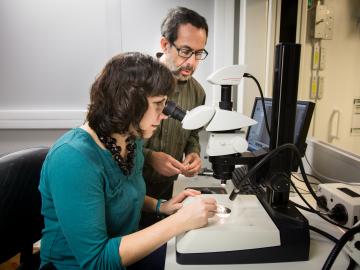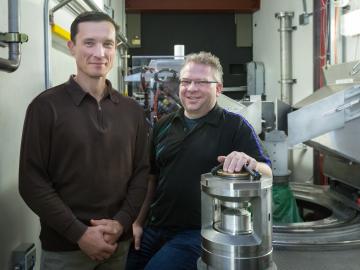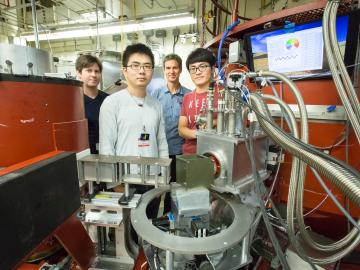
Filter News
Area of Research
- (-) Biology and Environment (56)
- (-) Neutron Science (47)
- Advanced Manufacturing (2)
- Biological Systems (2)
- Building Technologies (1)
- Clean Energy (112)
- Climate and Environmental Systems (2)
- Computational Engineering (1)
- Computer Science (2)
- Electricity and Smart Grid (1)
- Energy Sciences (1)
- Fossil Energy (1)
- Fuel Cycle Science and Technology (1)
- Fusion and Fission (19)
- Fusion Energy (3)
- Isotope Development and Production (1)
- Isotopes (15)
- Materials (118)
- Materials Characterization (2)
- Materials Under Extremes (1)
- National Security (26)
- Nuclear Science and Technology (9)
- Renewable Energy (2)
- Supercomputing (95)
- Transportation Systems (1)
News Type
News Topics
- 3-D Printing/Advanced Manufacturing (4)
- Artificial Intelligence (4)
- Big Data (6)
- Bioenergy (18)
- Biology (24)
- Biomedical (4)
- Biotechnology (5)
- Buildings (1)
- Chemical Sciences (3)
- Clean Water (4)
- Climate Change (16)
- Composites (1)
- Computer Science (7)
- Coronavirus (4)
- Decarbonization (11)
- Energy Storage (2)
- Environment (34)
- Exascale Computing (2)
- Fossil Energy (1)
- Frontier (2)
- Grid (1)
- High-Performance Computing (11)
- Hydropower (3)
- Isotopes (1)
- Machine Learning (4)
- Materials (10)
- Materials Science (6)
- Mathematics (2)
- Mercury (2)
- Microscopy (3)
- Nanotechnology (3)
- National Security (2)
- Net Zero (1)
- Neutron Science (25)
- Nuclear Energy (1)
- Partnerships (2)
- Physics (2)
- Renewable Energy (1)
- Simulation (13)
- Space Exploration (1)
- Summit (2)
- Sustainable Energy (11)
- Transportation (2)
Media Contacts

A quest to understand how Sphagnum mosses facilitate the storage of vast amounts of carbon in peatlands led scientists to a surprising discovery: the plants have sex-based differences that appear to impact the carbon-storing process.

Three scientists from the Department of Energy’s Oak Ridge National Laboratory have been elected fellows of the American Association for the Advancement of Science, or AAAS.

As part of a multi-institutional research project, scientists at ORNL leveraged their computational systems biology expertise and the largest, most diverse set of health data to date to explore the genetic basis of varicose veins.

The truth is neutron scattering is not important, according to Steve Nagler. The knowledge gained from using it is what’s important

A team of scientists led by ORNL discovered the gene in agave that governs when the plant goes dormant and used it to create poplar trees that nearly doubled in size, increasing biomass yield for biofuels production

Erica Prates has found a way to help speed the pursuit of healthier ecosystems by linking the function of the smallest molecules to their effects on large-scale processes, leveraging a combination of science, math and computing.






